“This isn’t something you normally say when you’re fly-fishing,” mused Kyle Zempel, “but thank goodness for the wind.”
What Zempel, the proprietor of the Black Earth Angling Company and our guide on this lower Wisconsin River smallmouth trip, meant was that without the wind’s moderating influence, we would have been standing in pools of our own sweat. The midday temperature had climbed into the 90s, and while it’s tempting to call such smothering heat “unseasonable” for Wisconsin in June, the definition of “seasonable,” in this day and age, has become increasingly slippery.
In a way, though, the tropical conditions were a fit for the environment. This stretch of the Wisconsin is broad, braided, relatively shallow, densely wooded, and almost completely undeveloped. Sprinkle a few hippos around and maybe an elephant or two, throw in the distant roar of a lion and some monkey chatter filtering out of the treetops, and you’d have no trouble imagining you’d landed on a river somewhere in the African veldt.
Or, adopting a different frame of reference, if you swapped out the densely ranked willows growing along the water’s edge for mangroves, it’d be equally easy to imagine you were on one of those remote flats in the Bahamas—I’m thinking the west side of Andros here—that seems to have no beginning or end.
It’s just a very cool place (even when the sun’s hammering down and it’s hotter than hell), as much a river of sand as of water. Phenomenal wildlife habitat, too: My fishing partner Winston Ostrow identified 43 different species of birds during our day on the river, many of the smaller, more furtive ones—American redstarts, blue-gray gnatcatchers, yellow-throated vireos—by their vocalizations alone. Hey, they don’t call him the Sage of the Driftless for nothing.
At this point you’re probably wondering What about the smallmouth fishing? Well, the short, trip-specific answer is that it was crazy good. Lots of feistily aggressive fish, lots of highlight-reel “eats” (all of them on the surface or just beneath it), lots of high-flying, hard-pulling action—just so damn much fun that you find yourself looking over your shoulder to see if the cops are coming.
(Actually, a couple of DNR wardens did show up but, seeing that we were fly fishermen, they didn’t even bother to check our licenses. They asked us how it was going, bantered some with Kyle, and motored off.)
The somewhat longer, more general answer is that this may be the most unique smallmouth bass fishery in the world. It’s certainly the most unique one that I’m aware of. The first rule of smallmouth fishing, so ironclad as to have the force of law, is that they’re a fish of the rocks. Find rocks—rocky points, rocky reefs, rocky shorelines, rocky whatever—and you’ll find smallies.

This makes perfect sense when you consider that while the smallmouth bass is an opportunistic predator that enjoys a varied bill of fare, its favorite menu selection, by far, is crayfish. And where do crayfish live? In the rocks, of course, scuttling in and out of the crevices with that pugnaciously pissed-off attitude common to the entire tribe of aquatic crustaceans.
This rocks-smallmouth equation holds true everywhere in smallmouth country—but not on the lower Wisconsin. You can travel a lot of river miles there without seeing rock number one, and while I’m sure there are crayfish in the ecosystem a smallmouth intent on a crawdad dinner would likely starve to death before finding enough of them to make a meal.
But if crayfish are rare, baitfish, in particular emerald shiners, are staggeringly abundant. And the smallmouth bass of the lower Wisconsin River have evolved not only to key in on them, but to hunt them in packs. This, too, is unique in my experience—and I caught my first smallmouth bass in 1965. Waiting in ambush from some kind of hiding place—the branches of a toppled tree, say, or below the lip where a flat or sandbar drops off and the current sweeps over it—they’ll pounce on a passing school of shiners with murderous intent and savage ferocity, churning the water to a froth as they remorselessly chase down their prey.

Sorry, got a little carried away there. Writing about smallmouth has that effect on me.
Kyle Zempel dubbed this phenomenon “The Crash,” and in the ten years or so since he pioneered the fishery the term’s become synonymous with fly-fishing for smallmouth on the lower Wisconsin. (You can find multiple videos of this spectacle by Googling “smallmouth the crash.”) If you’ve ever seen bluefish or stripers “blitzing” baitfish in the salt, this is exactly the same deal. Dropping a minnow-imitating fly anywhere close to a pack of crashing smallmouth is like dropping a lit match into a can of gasoline. An explosion is inevitable.
Crashing smallmouth typically hunt up-and-down a specific piece of shoreline or offshore structure, and this is where a nifty piece of technology called “Spot-Lock” comes in. Also called a “GPS anchor,” it basically gives the command Stay! to a bow-mounted trolling motor, which responds by adjusting thrust and direction as necessary to keep the boat stationary. With Spot-Lock, Kyle can position his boat—a wonderfully stable center console jon powered by a 65-horsepower Mercury jet (the only way to go in these shallow, snag-infested waters)—right where he wants it without having to raise the anchor every time he makes a move.

It’s pretty sweet. And it’s a hell of an effective way to help your sports keep their flies in the smallmouth danger zone. (Yeah, I saw the Top Gun re-boot.) As an old-school deerhair guy, I fished riffs of the basic Dahlberg Diver type all day long; Winston, for his part, tried a number of patterns before settling on the Crease Fly, which, not coincidentally, is Kyle’s “go to.” There’s a reason for that: It works. It’s easy and inexpensive to tie, too, and also surprisingly durable—a winning combination for a fly-fishing professional who has to keep a sharp eye on the bottom line.
I tangled with several northern pike, too, fish that charged out from the bank like Javelin missiles aimed at Russian tanks and absolutely detonated on a chartreuse Dahlberg (and ultimately cost me one of them). They’re among the smorgasbord of species that populate the lower Wisconsin; the day before Winston and I fished with Kyle, his client had landed an 18-inch white bass, the biggest “whitey” any of us had ever heard of. Walleyes are another fairly common catch, especially in the fall. There are a few muskies around, also, but about the only time you see them, according to Kyle, is when they’re trying to make a meal out of a smallmouth that someone’s bringing in—an encounter that tends to end very unhappily for the smallmouth.
Some cool non-game species thrive in these waters as well, including paddlefish, several varieties of sturgeon, and something called a quillback sucker that’s a dead ringer for a baby permit. “Sand permit,” Kyle calls them. He hasn’t figured out how to catch them, though.

If it occurs to you that sand is a recurring theme here, well, get this: The Leopold Shack, the former chicken coop that was the weekend retreat for Aldo Leopold and his family and served as the setting for his immortal A Sand County Almanac, stands just a few clicks upriver from where we put in. I don’t know that Leopold did much fishing on the Wisconsin, but I have no doubt whatsoever that if he were here he’d nod approvingly in Kyle’s direction—and that he’d admire the heck out of the ethic of respect, for the river and its resources, that Kyle brings to his job.
“I keep waiting for this to get old,” Kyle said towards the end of the day, as yet another willing smallmouth blasted one of our flies. “But it never does.”




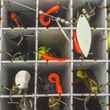
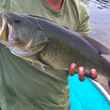
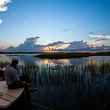
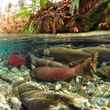




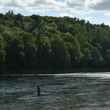



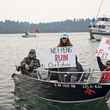



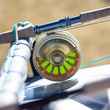




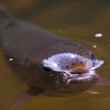
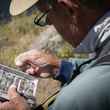


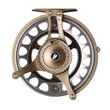
Comments
Jerry Kustich replied on Permalink
For me, fly fishing has become a quest for finding different, unique places away from the main stream. This piece reflects that perfectly. Very nice.
Brooks Scott replied on Permalink
It certainly doesn't hurt that Kyle and his wife are among some of the nicest people you'll ever meet. A day on the river with the Black Earth team never disappoints. You also forgot to mention the amazing shore lunch: Kyle's special recipe homemade sausages. When I moved out of the midwest in 2020, this is one of those experiences that I knew I was going to miss having only a few hours away. I'll make the 1200 mile drive next summer to fish upper midwest smallmouth and Kyle will be one of the first people I call.
Guy replied on Permalink
'Most unique' does not make sense. Something is either unique or not.
Larry Rand replied on Permalink
According to the Cambridge Dictionary, "unique" means "being the only existing one of its type or, more generally, unusual, or special in some way." While the first definition doesn't allow for comparison, the latter does. The lower Wisconsin River is both unusual and special, as the article indicates.
Pages